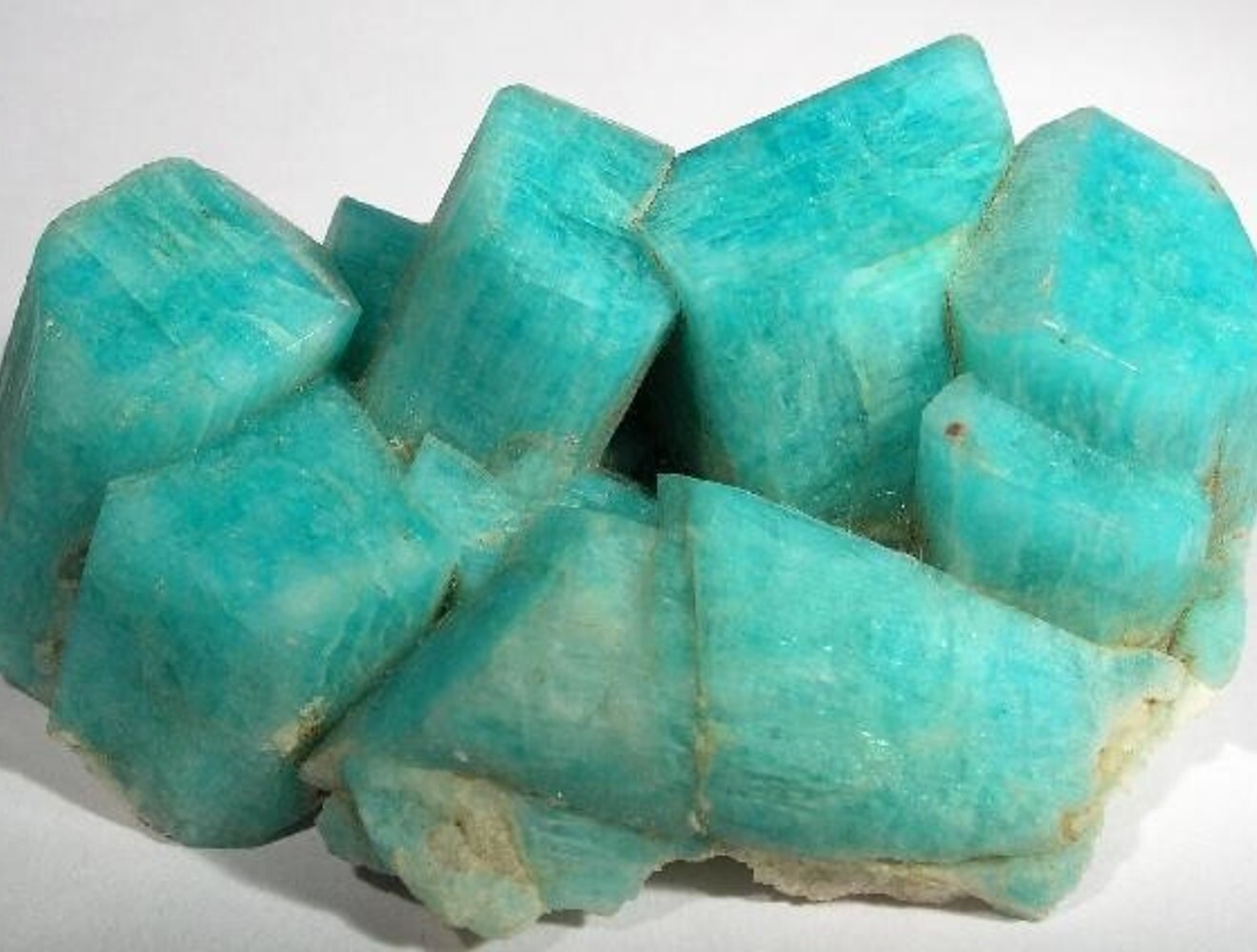
Microcline is a fascinating mineral that often goes unnoticed. Did you know it's a type of feldspar, which is one of the most abundant minerals on Earth? Microcline can be found in a variety of colors, including green, pink, and white. Its green variety, known as amazonite, is particularly prized by gem collectors. This mineral forms in igneous rocks and can be identified by its unique grid-like pattern when viewed under a microscope. Microcline also has a special property called twinning, where two crystals grow together in a symmetrical way. Whether you're a geology enthusiast or just curious, these 50 facts about microcline will surely spark your interest!
Key Takeaways:
- Microcline, a colorful mineral, is used in ceramics, glassmaking, and even jewelry. It's found in places like Brazil, Colorado, and Russia, and has unique physical properties like perfect cleavage and twinning.
- With its vibrant colors and unique properties, microcline is not just a pretty mineral but also has practical uses in industries like ceramics, glass production, and geological studies. It can be found in various locations around the world, each offering its own unique characteristics to the mineral.
What is Microcline?
Microcline is a fascinating mineral belonging to the feldspar group. It's known for its unique properties and vibrant colors. Here are some intriguing facts about this mineral.
- Microcline is a potassium-rich feldspar mineral.
- It often forms in granitic rocks.
- The mineral's name comes from the Greek words for "small" and "incline," referring to its crystal angles.
- Microcline can be found in colors like white, pink, green, and blue.
- The green variety of microcline is known as amazonite.
- It has a triclinic crystal system, meaning its crystals are not symmetrical.
- Microcline is commonly used in ceramics and glassmaking.
- It has a hardness of 6 on the Mohs scale.
- The mineral has a vitreous luster, giving it a glass-like appearance.
- Microcline can be found in pegmatites, which are coarse-grained igneous rocks.
Where is Microcline Found?
Microcline is found in various locations around the world. Each location offers unique characteristics to the mineral.
- Brazil is a major source of amazonite.
- Colorado in the USA is known for its high-quality amazonite.
- Russia also produces notable amazonite specimens.
- Norway has deposits of white and pink microcline.
- India is another significant source of microcline.
- Madagascar offers beautifully colored microcline crystals.
- Canada has microcline deposits in its granitic regions.
- Sweden is known for its unique microcline formations.
- Germany has historically been a source of microcline.
- Australia also has notable microcline deposits.
Uses of Microcline
Microcline is not just a pretty mineral; it has practical applications in various industries.
- It's used in the manufacture of ceramics.
- Microcline is a key ingredient in glass production.
- It's used as a flux in the production of enamel and glazes.
- The mineral is also used in abrasives.
- Microcline is sometimes used in gemstones.
- Amazonite is popular in jewelry making.
- It's used in ornamental carvings.
- Microcline can be found in architectural stones.
- It's used in geological studies to understand rock formation.
- The mineral is also used in soil conditioning.
Physical Properties of Microcline
Microcline has several distinct physical properties that make it unique.
- It has a specific gravity of 2.55 to 2.63.
- The mineral exhibits perfect cleavage in two directions.
- Microcline has a refractive index of 1.518 to 1.526.
- It shows twinning, where two crystals grow together in a specific pattern.
- The mineral can exhibit perthitic texture, where it intergrows with albite.
- Microcline is translucent to opaque.
- It has a white streak when scratched on a porcelain plate.
- The mineral can show iridescence in some specimens.
- Microcline has a low thermal expansion.
- It can be fluorescent under UV light.
Interesting Facts About Microcline
Here are some more captivating facts about microcline that highlight its uniqueness.
- Amazonite was named after the Amazon River, although no deposits are found there.
- The mineral was used by ancient Egyptians for amulets and jewelry.
- Microcline can be confused with orthoclase, another feldspar mineral.
- It can form large crystals, sometimes several meters in size.
- The mineral is often associated with quartz and mica.
- Microcline can alter to kaolinite under weathering conditions.
- It has been used in pottery since ancient times.
- The mineral can be found in meteorites.
- Microcline is sometimes used in cosmetic products.
- It plays a role in the formation of clay minerals.
The Final Word on Microcline
Microcline, a fascinating mineral, holds a treasure trove of intriguing facts. From its vibrant colors to its unique crystal structure, it’s clear why geologists and collectors find it so captivating. This mineral, part of the feldspar group, plays a crucial role in the formation of igneous rocks. Its presence in granite and pegmatites makes it a key player in Earth's geological processes.
Beyond its scientific importance, microcline's stunning green variety, amazonite, has been cherished for centuries in jewelry and decorative arts. Its ability to form twinned crystals adds another layer of wonder. Whether you’re a rock enthusiast or just curious about the natural world, microcline offers a glimpse into the complexity and beauty of minerals. Keep exploring, and who knows what other amazing facts you might uncover about this remarkable mineral!
Frequently Asked Questions
Was this page helpful?
Our commitment to delivering trustworthy and engaging content is at the heart of what we do. Each fact on our site is contributed by real users like you, bringing a wealth of diverse insights and information. To ensure the highest standards of accuracy and reliability, our dedicated editors meticulously review each submission. This process guarantees that the facts we share are not only fascinating but also credible. Trust in our commitment to quality and authenticity as you explore and learn with us.
